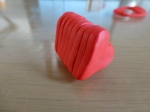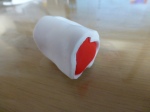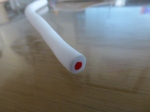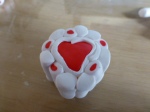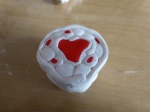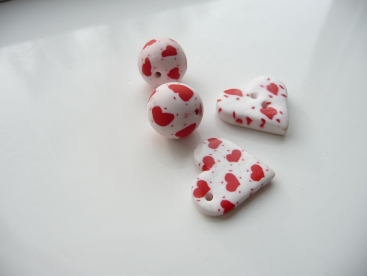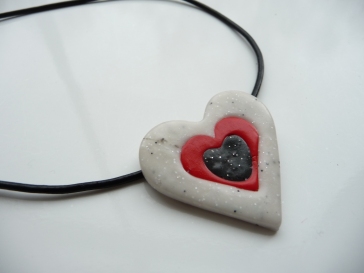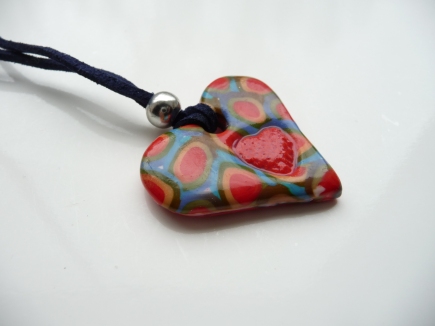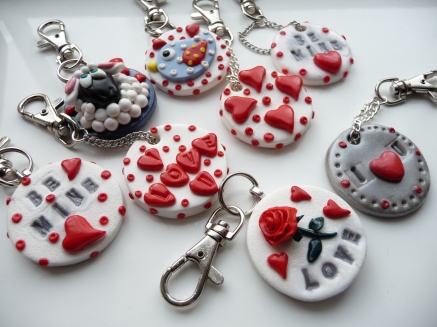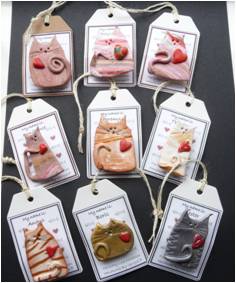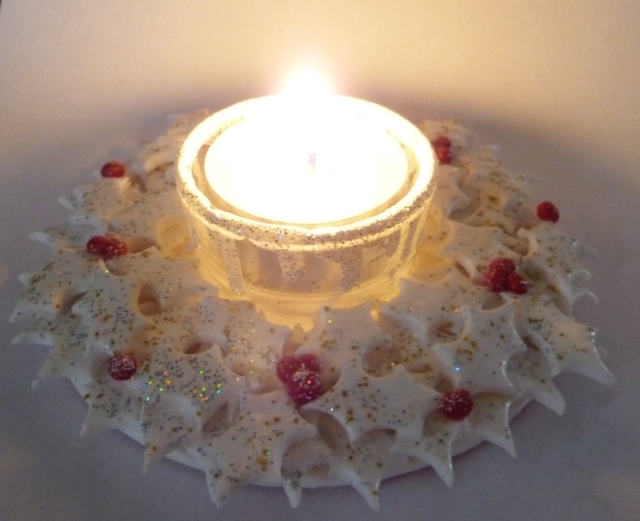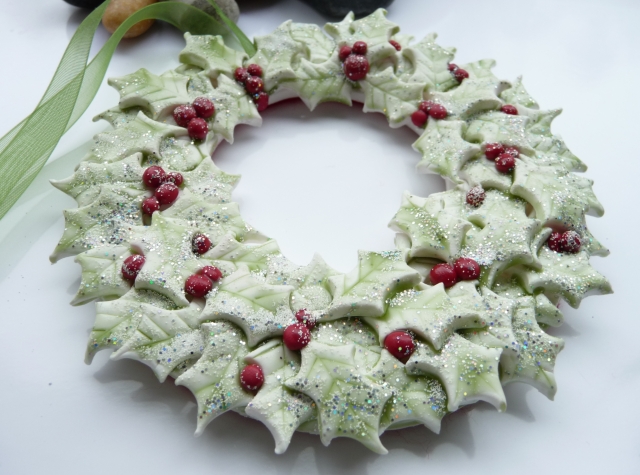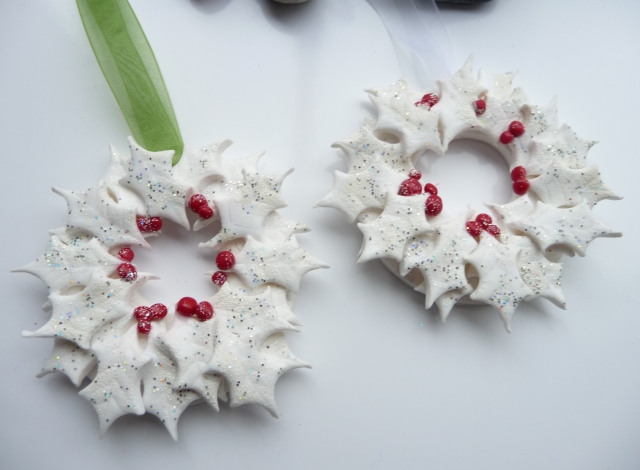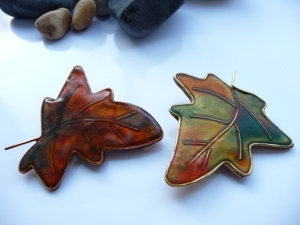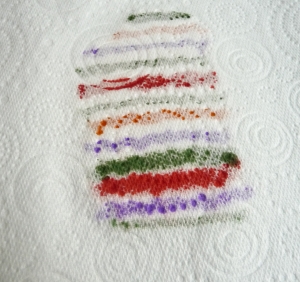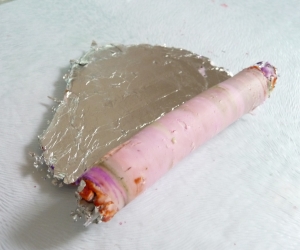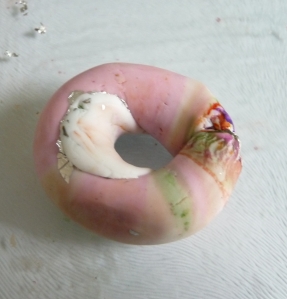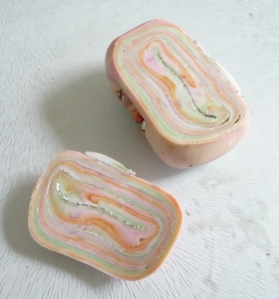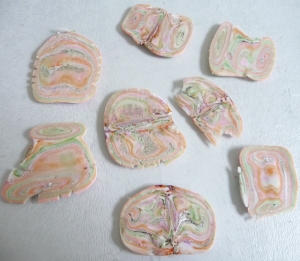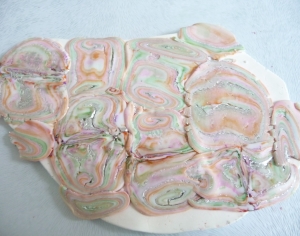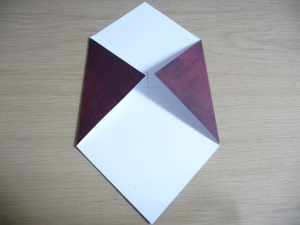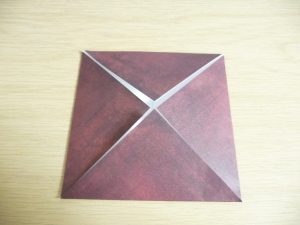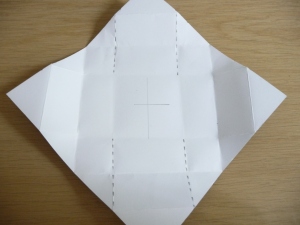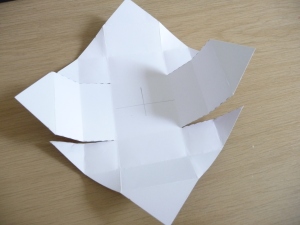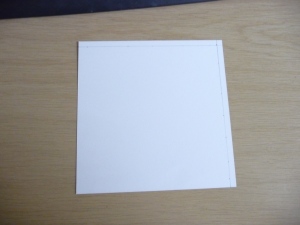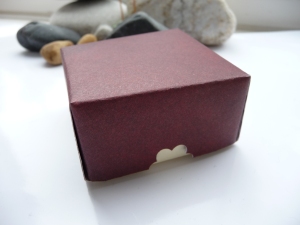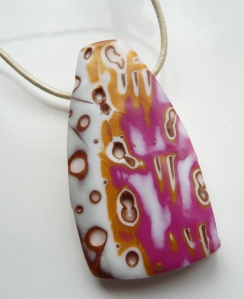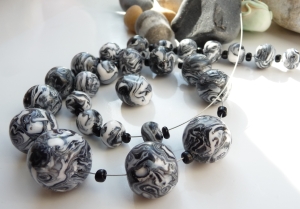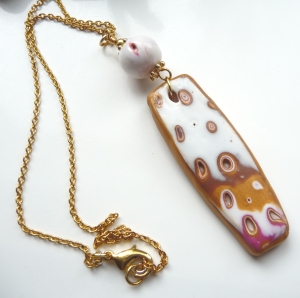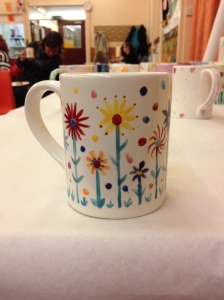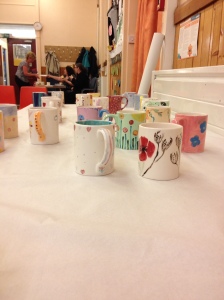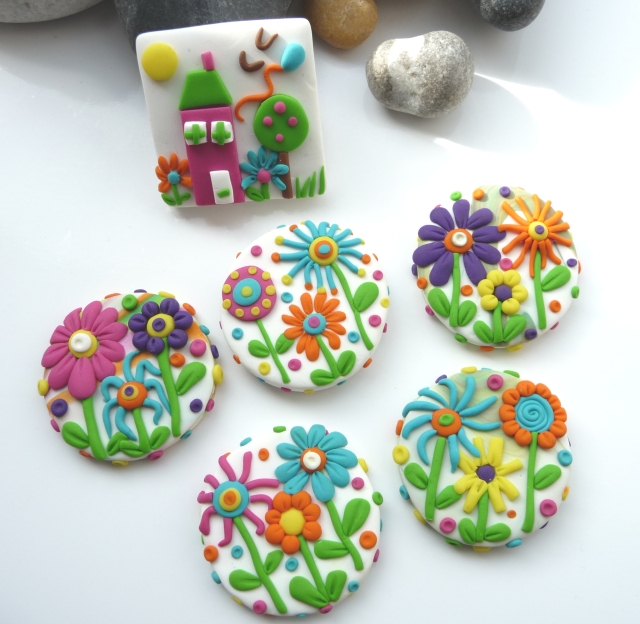
Last year I discovered Adirondack Alcohol Inks and since then I have been incorporating them into lots of my designs. All you have to do is apply a couple of drops to white or translucent polymer clay, allow the ink to dry fully, then mix it in together with the clay to create a new shade. An alternative use is combining it with Fimo liquid gel, applying it to baked pieces with a thin brush, then baking again for around 15-20 mins (or you can use a heat gun, but you have to be careful not to cause a ripple or run off). You can make some very colourful pieces this way, especially if you like enamel looking items, which I do.
The only thing you need to be aware of, especially if mixing with white or translucent clay is that the colours can change once baked and don’t try mixing the inks together to create other colours, because all you will get is muddy brown! I conducted my own little experiment last year when I first tried them to see how much they changed and if the thickness of the clay mattered, this was done using translucent clay as I also wanted to see how opaque they were.
I totally forgot to share it on my blog then, but better late than never, if you are interested here are the results of my little experiment.
The coloured inks I used are: Wild Plum, Purple Twilight, Aqua, Denim, Red Pepper, Mountain Rose, Citrus and Pitch Black (see picture above). I have since added to this selection of colours.
I added 1 drop of each ink to small pieces of Fimo translucent clay, I allowed the clay to dry, then mixed the ink into the clay. I then rolled the pieces of clay out on the thickest setting of my pasta machine and used a 15mm circle cutter to cut out a circle from each. I then put the clay back through the pasta machine but on the thinnest setting and cut out more circles. I also did the same with some un-coloured translucent clay. I then baked them all for 30 minutes as per the clay manufacturers instructions.
Clay before baking.
Here are the results showing the baked clay fat and thin pieces next to unbaked clay so you can see how much it has changed:
Lastly I thought I would show you the translucency of each piece.
I will let you draw your own conclusions from the results, but it is very clear to see the difference in the unbaked and baked colours and the thinner the clay the better the translucency. I must add you can darken or lighten these colours by adding more or less ink, but be careful you don’t add too much as it might not dry (a paper towel may come in handy here!).
I will leave you with a few pieces that I have made using the alcohol inks, I also like using them over Rangers Perfect Pearls powders as this adds a nice shimmery effect.
Thanks for reading, any feedback or questions are always welcome.
Take care.
Georgia P




































